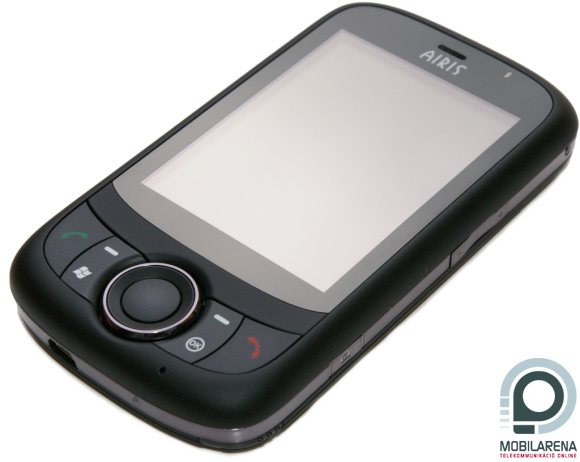Foreword
It was about two years ago when Airis, completely unknown until then in our country, has entered the local navigation PDA market with the T600 series. The key to their success has evidently been pricing, as although T620 wasn’t very advanced, it was made of low-quality materials and it even looked really ugly, it was cheap so it sold like hot cakes – as it worked perfectly with a hacked iGO, thus being the ideal, budget-friendly solution.
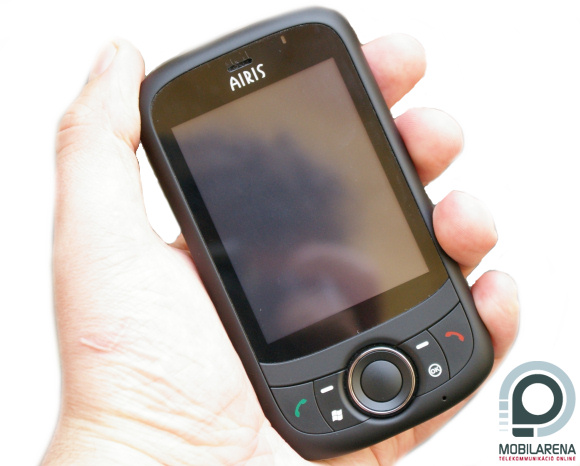
The successful series has been continued last April – exactly a year ago – with T482, which abandoned everything that made the predecessor so successful. The device still wasn’t a feature-filled one, it had a bit better design, but it has been as far from winning a design award as Motorola DynaTac is from 3G, but it still had a too high price. The problem was that it wasn’t any better than the end-of-sales models from other manufacturer – somehow its price hasn’t been tailored to these, but to a couple of years old rate. And now here’s T483 and if we take a look at it and its price-tag we can say for sure that the manufacturer still didn’t discover how does the market work…
The handset has been provided by SpeedShop, all the thanks to them. The mid-sized, white box had the handset, a network charger, a data cable and a stereo headset inside. This is far from enough for 340 euros, I’d even say it’s ridiculous. Have you taken a look at PDA price lists recently? Let’s see a couple of them for comparison, with no additional comments: HTC Touch 3G - 320 euros, E-TEN X650 - 300 euros, LG KS20 - 200 euros, Asus P320 - 240 euros, Asus P552W - 300 euros, Asus P750 - 340 euros. And it goes on and on…
Tell me! How does it look?
That’s all about the impressions the device had on me before taking it into my hands, let’s see what I though after tampering with it. I’ll show you a picture and try to give an idea of…
… the size of T483. The device is large like a whale; I think I have only seen such a big PDA only in the industrial segment in the last couple of years if we don’t mention HP 214. It is possible that there still are a couple of gadget freak on Earth who have grown up on the Pocket PC 2000 operating system and start drooling when they see such a thing, but there are surely less of them than simple users who prefer a Touch Diamond or an iPhone instead. Airis T483 is a PDA with a classical PDA design, at least that’s what my diplomatic self says, but I’d rather say that a manufacturer who launches in mid-2009 a 67.5 x 122 x 17.6 mm large Pocket PC (weighing 168 grams) without any innovation and improvements is just simply not normal. Besides its size T483 wouldn’t be that lame, its front panel is beautiful compared to its predecessors’, but people usually still prefer other kinds of handsets.
On the top there’s the speaker with a cute little Airis logo below that, while in the middle there’s the QVGA touchscreen with a diagonal of 3.2”, and a bit pale colors. On the bottom we can see the function buttons, so large that we can see them with our eyes shut. This is all placed in a completely black environment, made of soft, rubber-like plastic, thus making T483 look like a brick that has a firm grip.
The back panel is another example of innovative design, there is a huge speaker, a huge camera, a huge 2.0 mega label and a gigantic Airis logo. On the sides there is a chromed plastic stripe as well, on the right there’s the hook for the wrist-band (why?), the volume control keys and the camera’s shoot key, while on the bottom there’s the miniUSB connector and the telescopic stylus, on the left there’s the navigation software’s hotkey, the power button, the microSD slot and the 2.5 mm jack. These last two were made in a naturalistic spirit, as they aren’t covered with anything.
Hirdetés
On the inside
Some hardware improvements have been made since T482. First the operating system version has increased with a tenth, as T483 has Windows Mobile 6.1 Professional. The manufacturer threw away the old Intel PXA270 CPU as well; the new handset has the more powerful Marvell PXA310, clocked at 624 MHz. The strong processor comes with lots of memory, fortunately Airis also knows this golden rule, and so the memory size has been doubled, we have 170 MB free ROM (of 256 MB) and 82 MB for running programs (out of 128 MB RAM). We shouldn’t be surprised by the impressive numbers, the reason for the lots of free space is that T483 doesn’t come with any program that’s not included in Windows Mobile by default.
Speed is the only quality of the device that’s quite impressive. T482 had some issues in this matter as well, but fortunately we won’t notice anything like that on T483, applications run very fast, screen changes take fractions of a second, it’s astonishing. The marks below support this claim, the only problematic part is the sound test of VsBenchmark. If that wouldn’t decrease the overall score so much, the new Airis would probably have the highest total score we have ever seen with this program. I can even imagine that this was the thing that took one year to develop, which is impressive, in the case of T484 they just have to do something with the design and the default set of software in order to create the best Pocket PC of all times.
| Pocket PC Mark v1.03 | VsBenchmark 2007 | ||
| Dhrystone Bench. (CPU) | 244.52 (86.25) | Graphics | 2708 (1205) |
| Whetstone Bench. (CPU) | 8.82 (4.18) | Others | 3011 (1565) |
| Memory Benchmark | 930.25 (312.46) | JPEG | 5403 (2237) |
| File system Benchmark | 98.22 (108.42) | Games | 2670 (1103) |
| Storage Cards | - | Sound | 312 (674) |
| Graphics Benchmark | 298.78 (157.86) | Final | 2820 (1356) |
| Scores of Airis T482 in parentheses. | |||
Okay, basically it would take quite a lot of work to create a user interface like HTC TouchFLO for example, out of nothing. Airis has been so lazy they didn’t even license one of the solutions from SPB (like Mobile Shell), so T483 has a plain and simple Windows Mobile on it. A couple of symbolic improvements have been made, for example we can access the task manager with a click in the bottom right corner of the Today screen and the manufacturer has installed a sound recorder as well.
Data transfer, phone calls, GPS
No improvements have been made in terms of data transfer, so there’s still no 3G or HSDPA, we have the quad-band GSM module (850/900/1800/1900 MHz) and GPRS/EDGE support. Of course we shouldn’t panic if we want to browse the web on the handset, as it has WiFi. There’s also Bluetooth support at version 2.0, just like the miniUSB port, which means that the A2DP protocol – used for stereo sound – is present. The predecessor has a 1.1 USB connector, so this is another improvement.
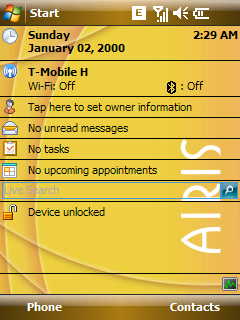
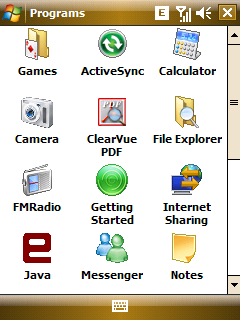
Software related to phone calls are of course the default ones from the OS. The contact list and messaging are provided by Outlook, it works perfectly, it can store as many contacts as much fits in the memory (nearly infinite), while besides text messages, MMS and e-mail are also supported. We have the default virtual keyboard for entering text, which is quite easy to use with the fine stylus.
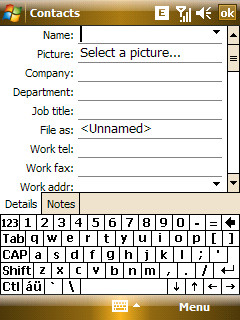
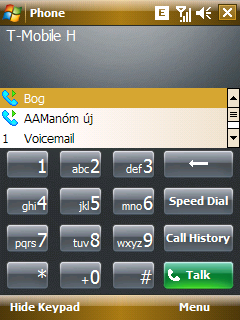
The device has a 20-band GPS receiver as well (with A-GPS support). During the test period it had no problems, positioning was fast and it never disconnected. I’ve used iGO 8 for navigation, which ran perfectly, without any lags, it didn’t hang up if there was an incoming call during navigation.
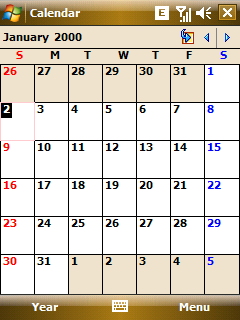
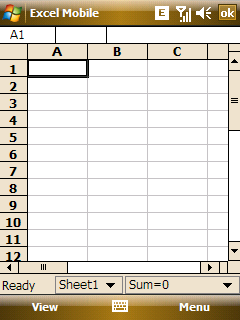
Multimedia
The camera’s resolution is 2 megapixels, it has fixed focus, the highest available resolutions are 1600 x 1200 pixels for images and 320 x 240 pixels for videos. The software has the average settings, we can apply effects on our pictures, tamper with white balance, image sharpness, color saturation and JPEG compression.

The test photos below tell everything. There are two options: T483 makes the worst pictures ever, or I had a defective one for testing. I think and hope that the second one is true.


The musical part is not advanced at all. The media player is the default Windows Media Player that has been outdated even three years ago, as although it can play back MP3 files, and it can even filter them by ID3 tags, but it won’t display album coves and has no equalizer, although that wouldn’t help much as sound quality is terrible both on the hammer-shaped headset and through the handsfree speaker, since the first has an echo, while the second is utterly distorted. T483 is good in one thing, which is movie playback: thanks to the powerful hardware movies play back perfectly, so those who like miniature sized films can be happy as this is the device of their choice! Another positive aspect is that the Media Player on the phone supports DivX movies.
Summary
The battery has a capacity of 1500 mAh and it can be changed. At average use it can keep the phone online for about two-three days, which is a pretty good value.
To tell the truth I feel a little bit sad about having to criticize the new Airis handset so harshly. It’s a fact that the design doesn’t follow current trends, but basically this wouldn’t be such a huge problem, there surely are people who like it. Speed is simply astonishing and navigation is also great. On the other hand it costs 340 euros, which might be due to the bad exchange rate of our currency, but it’s still a fact that you can get much more advanced handsets at such a price. It’s another sad thing that it doesn’t have a user interface that can be controlled with a finger – this has been present on the prototype we have seen last year, and we have no idea where did it go. If that GUI wouldn’t be missing, it would be better assembled and it would cost about 230-270 euros then I’d say it’s ok. I hope the price will fall in a couple of months and then it will be a great handset for those who like the classical PDA design, or maybe for those developers who need a fast and stable Windows Mobile testing environment.
Bocha
Translated by Szaszati
The handset has been provided by www.speedshop.hu, thanks. Please, click here to access the shop.
Specifications
| Airis T483 | ||
 |
Technology | GSM/GPRS/EDGE 850/900/1800/1900 MHz |
| Operating system | Windows Mobile 6.1 Professional | |
| Size | 67.5 x 122 x 17.6 mm | |
| Weight | 168 grams | |
| CPU | 624 MHz Marvell PXA310 | |
| ROM / RAM | 256 / 128 MB (170 / 82 MB free to use) | |
| Display | 3.2” diagonal, 240 x 320 pixels resolution TFT touchscreen display | |
| Expandability | microSD (SDHC-compatible) | |
| WiFi | 802.11b/g | |
| Infra / Bluetooth | no / 2.0 (A2DP too) | |
| GPS receiver | 20-channel SiRF / NMEA 0183 | |
| Audio | 2.5 mm jack, microphone, mono speaker | |
| Camera | 2 megapixels, fixed focus | |
| Battery | 1500 mAh changeable Li-Ion | |
| Others | - | |
